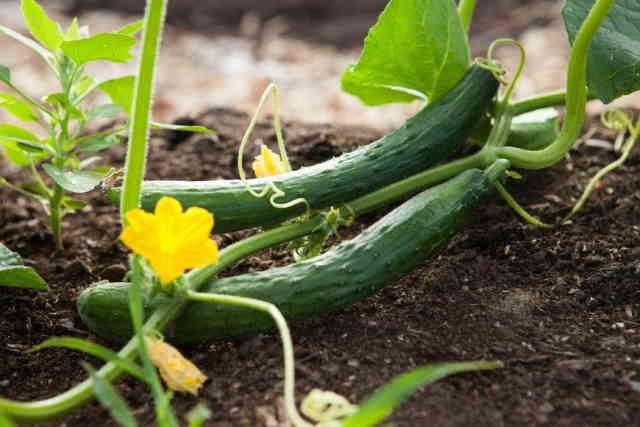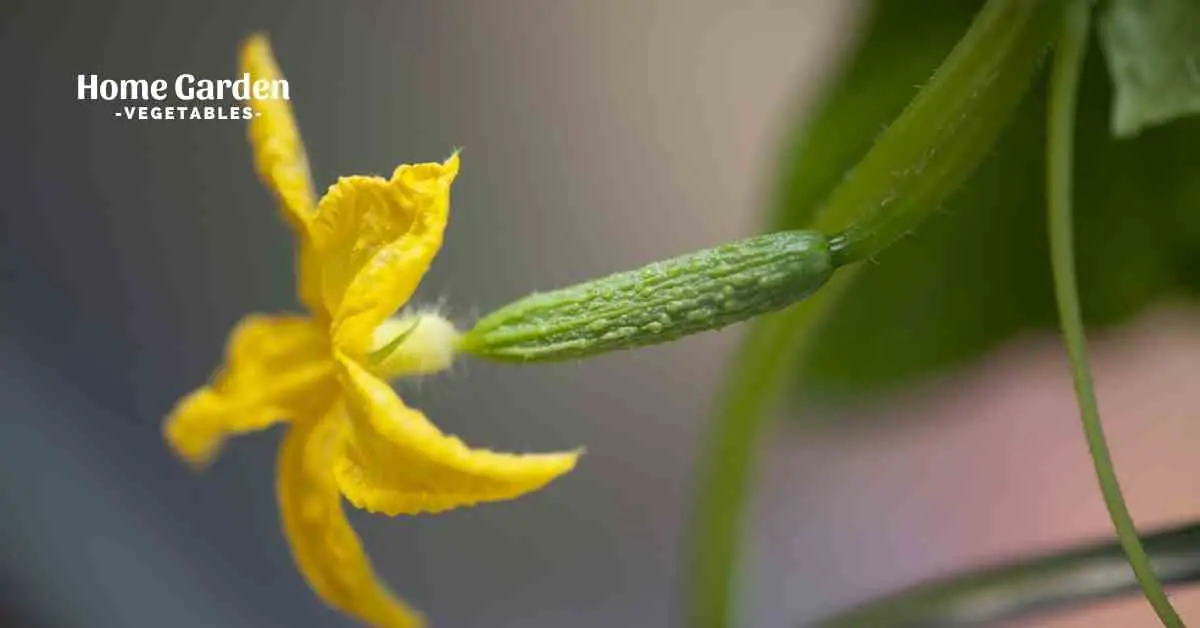One of the most popular vegetables to cultivate in home vegetable gardens is cucumbers. Despite their widespread use, cucumbers are often underestimated when it comes to growing requirements. Cucumbers tend to grow in any direction, making it difficult to know exactly how much room each plant needs in your garden.
In other words, how much room do cucumbers require? You’ll need 4 feet of length by 2 feet of width for cucumber plants. A lot of room is needed for cucumbers since their vines spread outward when they are congested, making them vulnerable to illnesses like powdery mildew if not given enough area to spread outward.
Reader Poll: What online courses would interest you?
Generally speaking, cucumbers need a large amount of room to flourish. Cucumbers may be grown in a smaller space if you’re concerned about running out, but you’ll need to leave enough room between each plant to ensure healthy growth.

To Save Space, Grow Cucumbers On Trellises.
Cucumber plants tend to take up a lot of room while they’re growing. As long as they are climbing, cucumbers do not need a lot of room in the garden to spread out. A trellis comes in handy here. A trellis is a set of upright bars used to support climbing plants.
Despite their preference for wide, level soil, cucumbers thrive when trained to climb a trellis. It will be possible to assist the cucumber plant to climb higher and latch on to the trellis’s bars by employing a trellis. As a consequence, you’ll have a lot more room in your garden to produce different kinds of veggies.
Subscribe to our newsletter!
One other benefit of growing cucumbers on a trellis is the ease with which they may be harvested when the trellis is used. When the cucumber vine begins to bear fruit, the cucumbers will frequently dangle from the trellis’s bars, making it a cinch to pick the cucumbers. Using the cucumber trellis eliminates the need to stoop in the garden to gather them.
Choosing Smaller Cucumber Varieties
Choosing smaller Cucumber plant kinds is another fantastic strategy to conserve space when producing cucumbers. You may avoid overwhelming your cucumbers before you even plant them by choosing dwarf kinds.
As an example of a low-maintenance cucumber, the bush slicer is said as such: Cucumber plants like this one do best in containers, rather than in the ground. This variety is sometimes known as a “Bush” slicer cucumber because its vines are more tightly grouped than traditional cucumber plants. Bush slicer cucumbers have the added benefit of being disease resistant, making them ideal for preserving.
Pruning Cucumber Vines
Cucumber vines can and will spread anywhere they are given enough room to do so. You’ll ultimately have too many cucumber plants and run out of room for everything else in your garden. When growing cucumbers in a small area, it’s critical to keep the vines trimmed.
In other words, how do you know which cucumber vines need to be pruned? The subsidiary cucumber vines that grow from the primary vine should be pruned. Smaller leaves and cucumbers will be produced when the subsidiary vines take energy away from the main vine.
Cucumber secondary vines are OK to have, but if they become out of hand and begin to encroach on the growth area of other plants, they need to be clipped. It’s also a good idea to cut cucumber blooms that bloom while the plant is young since at that stage the plant doesn’t have the energy to grow a large enough cucumber. Cucumber plants yield bigger cucumbers later in the growing season when blooms are pruned early in the season.
It’s also a good idea to remove any diseased leaves from the plant. If you see a discolored or mottled cucumber leaf, you should immediately prune it since it has been afflicted with a pathogen. Cucumber vine diseases may spread to healthy plants if sick leaves are not removed.
Where to Plant Them
A humid, warm climate, loose soil, and a lot of sunshine are all beneficial to growing cucumbers. They thrive throughout much of the country, although they perform particularly well in the south.
Cucumbers do best when planted in healthy soil with good drainage. Compost, for example, is a great source of organic matter for good soil. Soil amendments like composting and using organic fertilizers such as manure can help your cucumbers get off to a good start and provide the plants with nutrition as they expand. Get rid of anything that may obstruct your work, then add an abundance of organic matter and fertilizer to the soil as you go.
If planting hills or rows, plant cucumbers about an inch (2.5 cm) deep and thin as necessary. Cucumbers need a lot of areas to grow since they are a vine crop. Cucumber vines may be taught to climb a fence or a trellis in a small garden, but they can also be planted in big areas, where they can sprawl over rows. Reduce the number of areas cucumbers take up in your garden by training them to grow on a fence or trellis. In addition to making your yard seem better, using this technique will make it more orderly. Compactor shrub variants are ideal for growing in tiny places or even in containers because of their compact nature.
Conclusion
Harvesting must be completed by removing and destroying every last piece of foliage from the trellis, ideally by burning. This will assist to prevent infections from spreading in the future. In other words, you take away the string, twine, or wire that was attached to the stakes. After that, they’re dug out, dried, and placed in a utility room for the winter for safekeeping. After removing the trellis, you’ll want to clean up the area by digging up the dirt and pulling out the plants’ roots. Next, start preparing the beds for planting the next crop.

